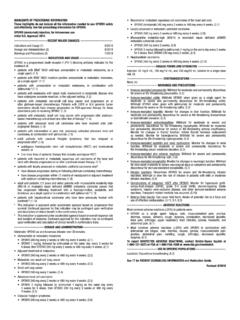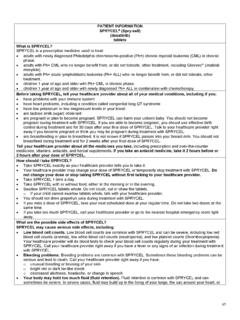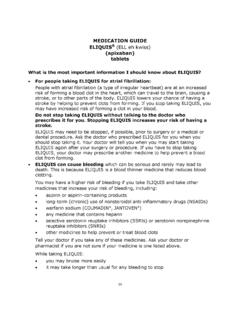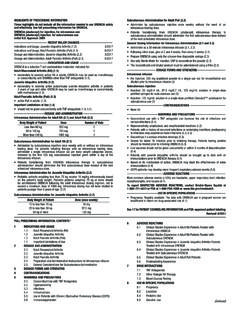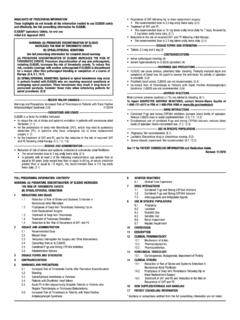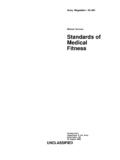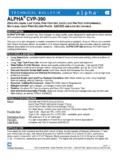Transcription of KENALOG -40 INJECTION - BMS
1 KENALOG -40 INJECTION . (triamcinolone acetonide injectable suspension, USP). NOT FOR USE IN NEONATES. CONTAINS BENZYL ALCOHOL. For Intramuscular or Intra-articular Use Only NOT FOR INTRAVENOUS, INTRADERMAL, INTRAOCULAR, EPIDURAL, OR INTRATHECAL USE. DESCRIPTION.. KENALOG -40 INJECTION (triamcinolone acetonide injectable suspension, USP) is a synthetic glucocorticoid corticosteroid with anti-inflammatory action. THIS. FORMULATION IS SUITABLE FOR INTRAMUSCULAR AND INTRA- ARTICULAR USE ONLY. THIS FORMULATION IS NOT FOR INTRADERMAL. INJECTION . Each mL of the sterile aqueous suspension provides 40 mg triamcinolone acetonide, with sodium chloride for isotonicity, (w/v) benzyl alcohol as a preservative, carboxymethylcellulose sodium, and polysorbate 80.
2 Sodium hydroxide or hydrochloric acid may be present to adjust pH to to At the time of manufacture, the air in the container is replaced by nitrogen. The chemical name for triamcinolone acetonide is 9-Fluoro-11 ,16 ,17,21- tetrahydroxypregna-1,4-diene-3,20-dione cyclic 16,17-acetal with acetone. Its structural formula is: MW 1. Triamcinolone acetonide occurs as a white to cream-colored, crystalline powder having not more than a slight odor and is practically insoluble in water and very soluble in alcohol. CLINICAL PHARMACOLOGY. Glucocorticoids, naturally occurring and synthetic, are adrenocortical steroids that are readily absorbed from the gastrointestinal tract. Naturally occurring glucocorticoids (hydrocortisone and cortisone), which also have salt- retaining properties, are used as replacement therapy in adrenocortical deficiency states.
3 Synthetic analogs such as triamcinolone are primarily used for their anti-inflammatory effects in disorders of many organ systems. KENALOG -40 INJECTION has an extended duration of effect which may be sustained over a period of several weeks. Studies indicate that following a single intramuscular dose of 60 mg to 100 mg of triamcinolone acetonide, adrenal suppression occurs within 24 to 48. hours and then gradually returns to normal, usually in 30 to 40 days. This finding correlates closely with the extended duration of therapeutic action achieved with the drug. INDICATIONS AND USAGE. Intramuscular Where oral therapy is not feasible, injectable corticosteroid therapy, including KENALOG -40 INJECTION (triamcinolone acetonide injectable suspension, USP) is indicated for intramuscular use as follows: Allergic states: Control of severe or incapacitating allergic conditions intractable to adequate trials of conventional treatment in asthma, atopic dermatitis, contact dermatitis, drug hypersensitivity reactions, perennial or seasonal allergic rhinitis, serum sickness, transfusion reactions.
4 Dermatologic diseases: Bullous dermatitis herpetiformis, exfoliative erythroderma, mycosis fungoides, pemphigus, severe erythema multiforme (Stevens-Johnson syndrome). 2. Endocrine disorders: Primary or secondary adrenocortical insufficiency (hydrocortisone or cortisone is the drug of choice; synthetic analogs may be used in conjunction with mineralocorticoids where applicable; in infancy, mineralocorticoid supplementation is of particular importance), congenital adrenal hyperplasia, hypercalcemia associated with cancer, nonsuppurative thyroiditis. Gastrointestinal diseases: To tide the patient over a critical period of the disease in regional enteritis and ulcerative colitis. Hematologic disorders: Acquired (autoimmune) hemolytic anemia, Diamond-Blackfan anemia, pure red cell aplasia, selected cases of secondary thrombocytopenia.
5 Miscellaneous: Trichinosis with neurologic or myocardial involvement, tuberculous meningitis with subarachnoid block or impending block when used with appropriate antituberculous chemotherapy. Neoplastic diseases: For the palliative management of leukemias and lymphomas. Nervous system: Acute exacerbations of multiple sclerosis; cerebral edema associated with primary or metastatic brain tumor or craniotomy. Ophthalmic diseases: Sympathetic ophthalmia, temporal arteritis, uveitis, and ocular inflammatory conditions unresponsive to topical corticosteroids. Renal diseases: To induce diuresis or remission of proteinuria in idiopathic nephrotic syndrome or that due to lupus erythematosus. Respiratory diseases: Berylliosis, fulminating or disseminated pulmonary tuberculosis when used concurrently with appropriate antituberculous chemotherapy, idiopathic eosinophilic pneumonias, symptomatic sarcoidosis.
6 Rheumatic disorders: As adjunctive therapy for short-term administration (to tide the patient over an acute episode or exacerbation) in acute gouty arthritis; acute rheumatic carditis; ankylosing spondylitis; psoriatic arthritis; rheumatoid arthritis, including juvenile rheumatoid arthritis (selected cases may require low-dose maintenance therapy). For the treatment of dermatomyositis, polymyositis, and systemic lupus erythematosus. 3. Intra-Articular The intra-articular or soft tissue administration of KENALOG -40 INJECTION is indicated as adjunctive therapy for short-term administration (to tide the patient over an acute episode or exacerbation) in acute gouty arthritis, acute and subacute bursitis, acute nonspecific tenosynovitis, epicondylitis, rheumatoid arthritis, synovitis of osteoarthritis.
7 CONTRAINDICATIONS. KENALOG -40 INJECTION is contraindicated in patients who are hypersensitive to any components of this product (see WARNINGS: General). Intramuscular corticosteroid preparations are contraindicated for idiopathic thrombocytopenic purpura. WARNINGS. Serious Neurologic Adverse Reactions with Epidural Administration Serious neurologic events, some resulting in death, have been reported with epidural INJECTION of corticosteroids (see WARNINGS: Neurologic). Specific events reported include, but are not limited to, spinal cord infarction, paraplegia, quadriplegia, cortical blindness, and stroke. These serious neurologic events have been reported with and without use of fluoroscopy.
8 The safety and effectiveness of epidural administration of corticosteroids have not been established, and corticosteroids are not approved for this use. General Exposure to excessive amounts of benzyl alcohol has been associated with toxicity (hypotension, metabolic acidosis), particularly in neonates, and an increased incidence of kernicterus, particularly in small preterm infants. There have been rare reports of deaths, primarily in preterm infants, associated with exposure to excessive amounts of benzyl alcohol. The amount of benzyl alcohol from medications is usually considered negligible compared to that received in flush solutions containing benzyl alcohol. Administration of high dosages of medications containing this preservative must take into account the total amount of benzyl alcohol administered.
9 The amount of benzyl alcohol at which toxicity may occur is not known. If the patient requires more than the recommended dosages or 4. other medications containing this preservative, the practitioner must consider the daily metabolic load of benzyl alcohol from these combined sources (see PRECAUTIONS: Pediatric Use). Rare instances of anaphylaxis have occurred in patients receiving corticosteroid therapy (see ADVERSE REACTIONS). Cases of serious anaphylaxis, including death, have been reported in individuals receiving triamcinolone acetonide INJECTION , regardless of the route of administration. Because KENALOG -40 INJECTION (triamcinolone acetonide injectable suspension, USP) is a suspension, it should not be administered intravenously.
10 Unless a deep intramuscular INJECTION is given, local atrophy is likely to occur. (For recommendations on INJECTION techniques, see DOSAGE AND ADMINISTRATION.). Due to the significantly higher incidence of local atrophy when the material is injected into the deltoid area, this INJECTION site should be avoided in favor of the gluteal area. Increased dosage of rapidly acting corticosteroids is indicated in patients on corticosteroid therapy subjected to any unusual stress before, during, and after the stressful situation. KENALOG -40 INJECTION is a long-acting preparation, and is not suitable for use in acute stress situations. To avoid drug-induced adrenal insufficiency, supportive dosage may be required in times of stress (such as trauma, surgery, or severe illness) both during treatment with KENALOG -40 INJECTION and for a year afterwards.
